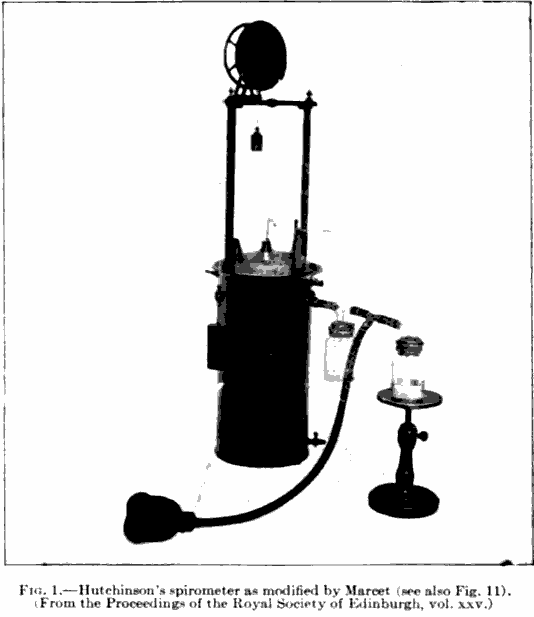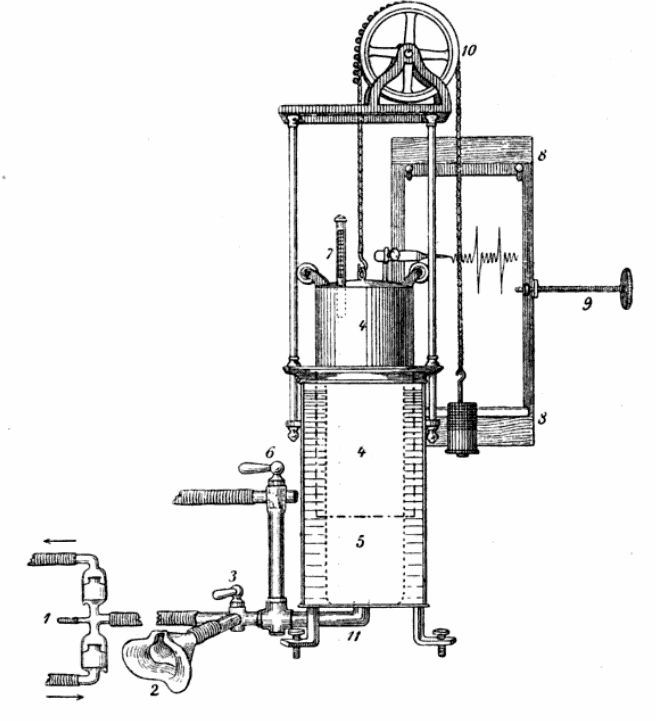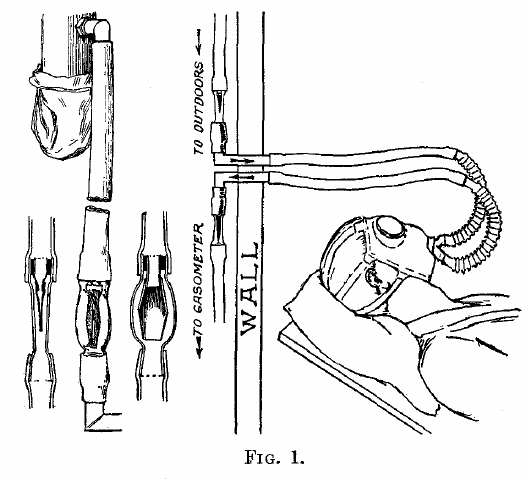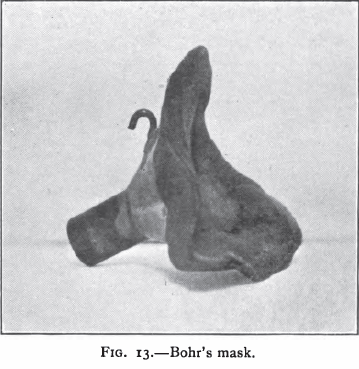From: The Harvey Lectures, Volume 3, 1909, page 226. A standard Hutchinson-style spirometer outfitted with what appear to be Muller (water seal) one-way valves and a mask for measuring tidal or minute volume.
Category Archives: Mask
Spirometer, 1907, with breathing mask and one-way valves
Mask for respiratory measurements, 1921
From: Notes on the apparatus used in determining the respiratory exchange in man: I. an adaptation of the French gas max for use in respiratory work, by Cameron Bailey, J. Biol Chem 1921; 47:277-279.
“The rubber gas mask used in the French army is admirably suited to this work. It is made of thick rubber, covers the whole face, and presents broad surfaces which closely engage the forehead, sides of the face, and jaw. The tissues in these regions are well supported by the bony framework of the face and the mask readily adapts itself to these fixed surfaces. It is held in place by elastic straps passing around the head. In emaciated subjects, leaks may occur above of below the zygoma, in the area the pull of the straps is in the same plane as the surface of the face. In such rare instances the leaks are overcome by placing 6 inch rubber sponges over these areas of the mask and binding them firmly in place with a 3 inch bandage. In this mask, the incoming air is directed upwards towards the windows, the opening of the expiratory tube being opposite the nose and mouth. In this way the space is perfectly ventilated and no discomfort results. Rubber flutter valves are eminently satisfactory for use with these masks. They are conveniently enclosed in flattened glass tubes introduced as near the mask as practicable. A satisfactory arrangement of mask valves for the Tissot method is shown in Fig. 1. The subject reclines in a wheel chair in the rest room, the tubes pass through the wall into the laboratory where the valves are mounted, the tubes then lead directly to the air supply and to the gasometer. A window permits the operator in the laboratory to observe the subject, while at the same time he can follow the respirations by watching the movement of the valve and start and stop the test by turning the 3-way valve on the gasometer.”
Mask, Bohr’s, 1916
From: The respiratory exchange of animals and man by August Krogh, 1916, page 40.
“Masks of rubber which can be fitted on the face and enclose the mouth and nose are far more convenient than mouthpieces, but it is extremely difficult to avoid leakage. Bohr constructed masks which were specially fitted to each person on whom it was intended to experiment. These masks (fig. 13) consist of a funnel-shaped piece of tinplate coated on the edge with a substance used by dentists and know commercially as Stent’s composition. This substance becomes soft at a temperature of about 50 degrees, and can then easily be moulded on the face of a person and can be made to fit absolutely airtight when greased with lanolin, causing at the same time a minimum of inconvenience. These masks are much used in Danish laboratories for all experiments which have to last more than a few minutes at a time.”



